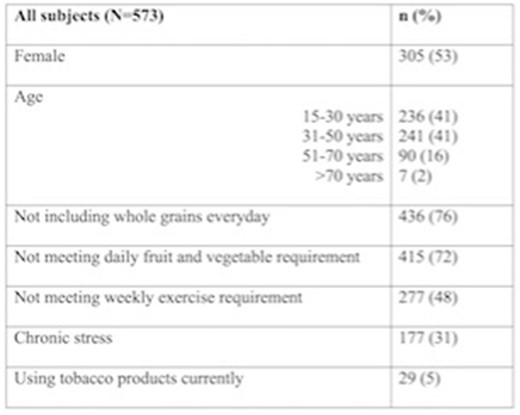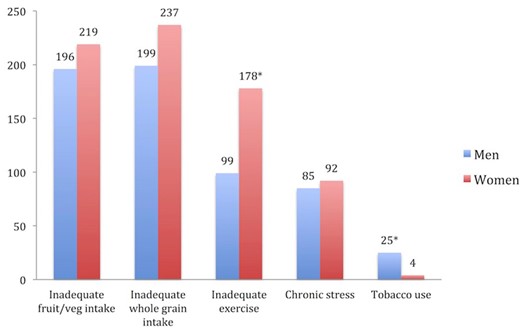-
PDF
- Split View
-
Views
-
Cite
Cite
P Chockalingam, V Natarajan, T Sekar, A survey-based comparison of cardiovascular health risk behaviours in Indian men and women during the pandemic, European Heart Journal, Volume 43, Issue Supplement_1, February 2022, ehab849.147, https://doi.org/10.1093/eurheartj/ehab849.147
Close - Share Icon Share
Abstract
Type of funding sources: None.
Cardiovascular disease (CVD), the leading cause of mortality globally, is caused by a combination of behavioral, clinical and genetic risk factors. The rising prevalence of unhealthy diet, inadequate exercise, psychosocial factors and tobacco use in urban and rural populations of India has posed a major epidemiological and healthcare threat in the recent past.
This study aims to understand the cardiovascular health risk behaviors in Indian men and women during the pandemic.
A survey-based study was conducted at different time points between April 2020 and August 2021. A pre-tested anonymized self-administered questionnaire was distributed online as a pre-program assessment of participants registering for the health awareness webinars conducted by our team. Demographic data and CVD risk behaviors pertaining to dietary consumption, exercise routine, sedentary behavior, psychosocial factors, sleep pattern, tobacco use and alcohol consumption were collected. Not meeting daily intake of whole grains and at least 4 portions of vegetables and fruits, non-performance of at least 150 minutes of brisk aerobic exercise per week, chronic stress and use of tobacco were considered risky behaviors, as per the international guidelines.
Of the 573 subjects, 305 (53%) were women and 236 (41%) were 15-30 years old. Majority of subjects were not meeting their requirements pertaining to whole grains (76%) and fruits/vegetables (72%). Inadequate exercise (48%), chronic stress (31%) and tobacco use (5%) were noted. Significantly more women than men (p = 0.0001) were falling short in their exercise requirement. Significantly more men than women (p = 0.0001) were using tobacco products (Figure).

Abstract Figure. Risk behaviors in study subjects

Abstract Figure. Comparison of risk behaviors
- aerobic exercise
- cardiovascular diseases
- heart disease risk factors
- diet
- lack of exercise
- exercise
- alcohol drinking
- cardiovascular system
- demography
- fruit
- india
- rural population
- self administration
- tobacco
- vegetables
- guidelines
- mortality
- stress
- tobacco use
- pandemics
- genetic risk
- sleep behavior finding
- whole grains
- healthy habits
- health risk behaviors



